Where to See Wild Dogs In Tanzania and Everything About Them
The captivating presence of African wild dogs in Tanzania, also known as African painted dogs, is something to be cherished. Join me as I delve into everything you want to know about them including where to see wild dogs in Tanzania and conservation efforts. It has been a long-held dream of mine to see these beautiful creatures, and I was able to find some during my time in Tanzania. Now I am sharing my insights into their world with you.
Disclaimer: This post may include affiliate links. If you click one of them, I may receive a small commission at no extra cost to you.
Where to See Wild Dogs in Tanzania
For those intrigued by the prospect of observing these incredible animals in their natural setting, Tanzania offers a few locations where wild dogs are frequently seen. Southern Tanzania, including Selous Game Reserve (Nyerere National Park) and Ruaha National Park offer good chances to find wild dogs, especially during the denning season from July to August.
I specifically chose to visit Selous Game Reserve as one of the best places where you can see wild dogs in Tanzania. I was lucky enough that we got a tip of a pack. We drove for 2 hours across the reserve and eventually found a pack of 10 wild dogs. My heart was full with that experience! We sat with them for about an hour before we had to leave to get back to camp before sunset.
Sightings are very unusual in northern Tanzania, like in the Serengeti National Park. If you are lucky enough to see one that would be an amazing sighting! Of course you can still see many other species of wildlife including the Big Five.
The best way to see wild dogs in Tanzania and access these remote areas, is by a reputable tour operator. I work with the company that I used when I visited the area, and I would love to help you plan your safari. Please contact me so I can help with setting up this guided experience.
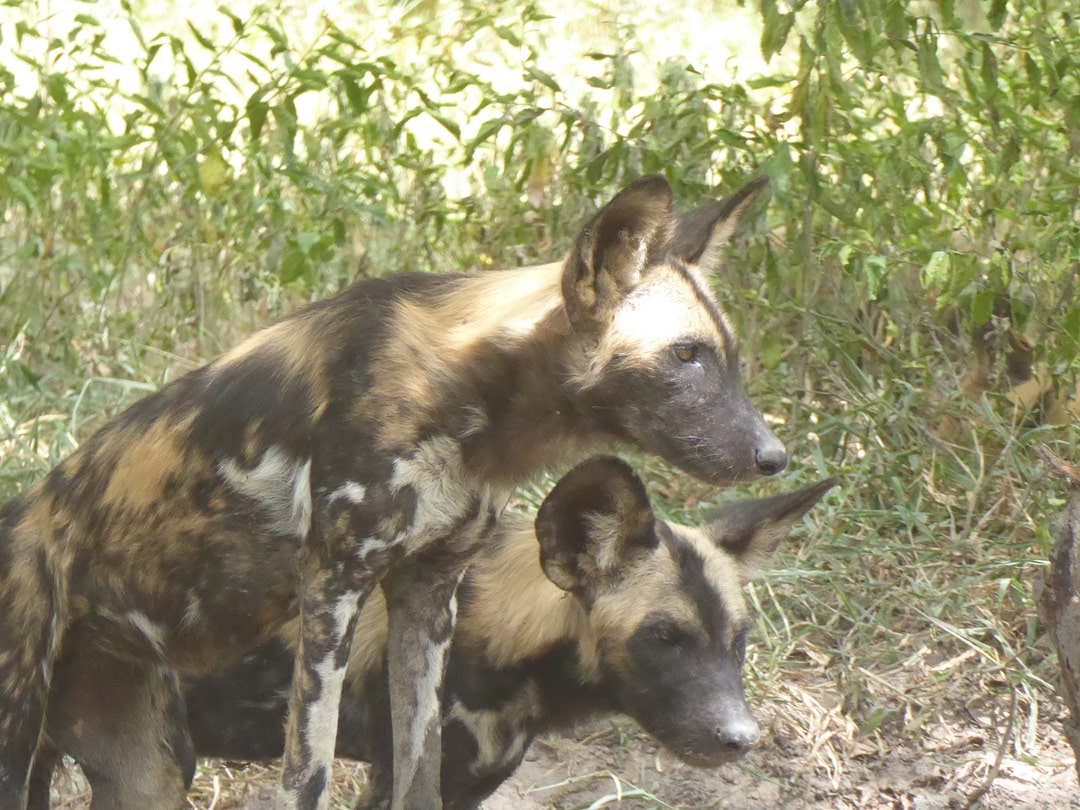
Facts About Wild Dogs
| Status: | Endangered |
| Scientific Name: | Lyacon Pictus |
| Weight: | 40 – 70 pounds |
| Length: | 30 – 56 inches |
Known for their vivid and unique coat patterns, they stand out as one of the world’s most endangered mammals. Their coats feature blotches of black, brown, yellow, and cream, hence its alternative name, the painted dog. Each dog is unique in its patterns.
With an estimated population of just 6,600 remaining in the wild, their survival is a conservation priority. Unfortunately they hold the title as Africa’s second rarest large carnivore, behind the Ethiopian Wolf. These extremely social animals boast remarkable adaptability, inhabiting diverse environments such as forests, grasslands, and deserts.
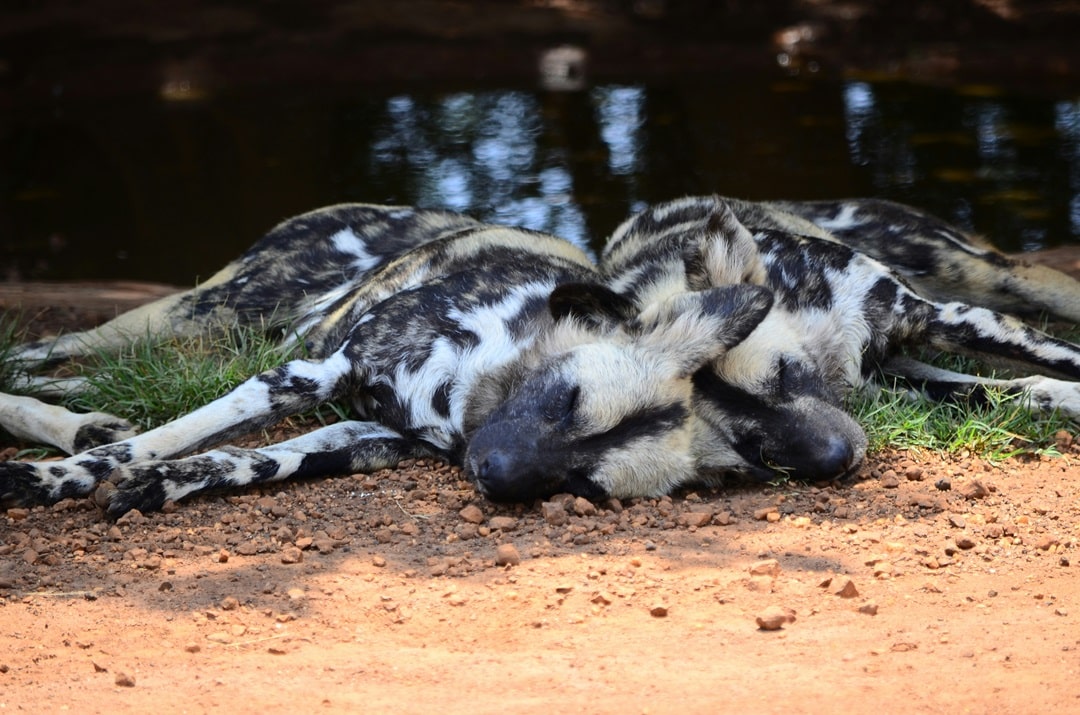
Social Structure and Behaviour of Wild Dogs
The social structure of wild dogs is a testament to their intelligence and cooperative nature. Typically, packs of wild dogs in Tanzania average 10 dogs, though some groups can go to over 30 members. These packs are deeply bonded, engaging in elaborate greeting rituals and caring collectively for the sick and injured. Dominance within the pack is established without aggression, with a dominant pair that often mates for life. Each pack is led by an ‘alpha’ male and female, with the female occupying the top slot.
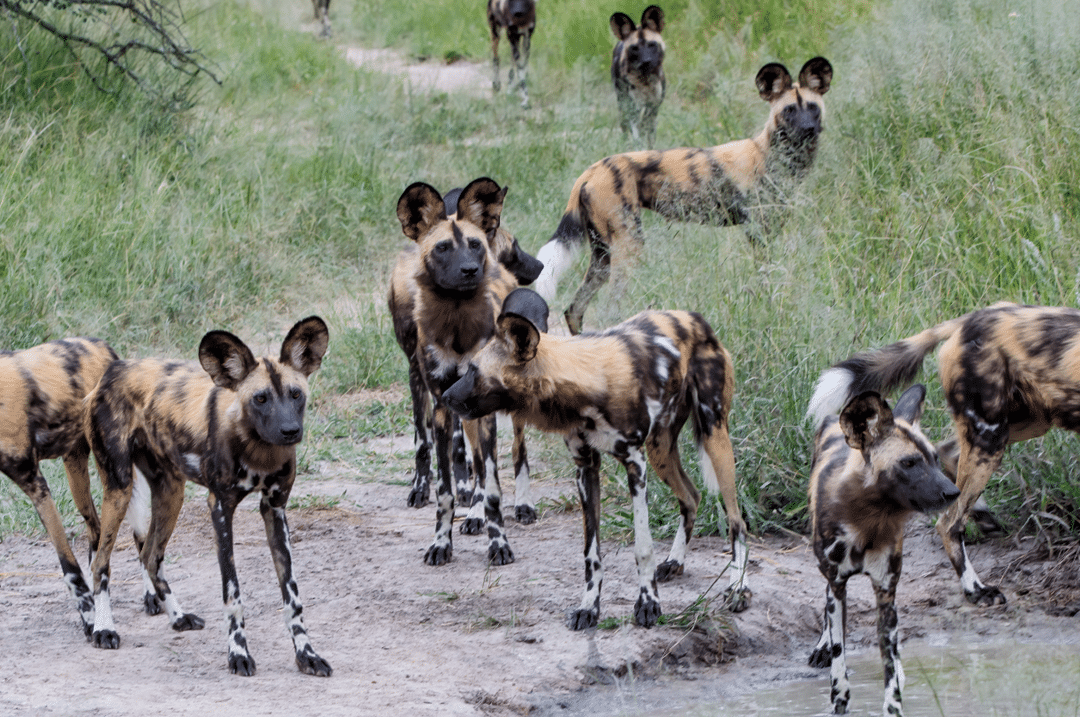
Communication between Wild Dogs
Communication among wild dogs involves a mix of vocal sounds, ear positions, and body language. Their calls, ranging from bird-like chirps to deep, haunting hoots, are essential for maintaining pack harmony and coordinating during hunts.
Wild Dog Puppies
Pup rearing is a communal activity for wild dogs. Only the alpha female typically breeds, producing litters that the entire pack then helps to raise. The typical gestation period is 60 to 80 days. Litters can comprise up to 15 pups, sheltered in dens for a minimum of two months. Weaning occurs around five weeks, with pups fed through regurgitated meat provided by other pack members.
The entire pack participates in feeding and protecting the young, ensuring their survival and integration. Despite large litter sizes, the harsh realities of nature mean that many pups do not survive, making the care provided by the pack crucial for those that do.
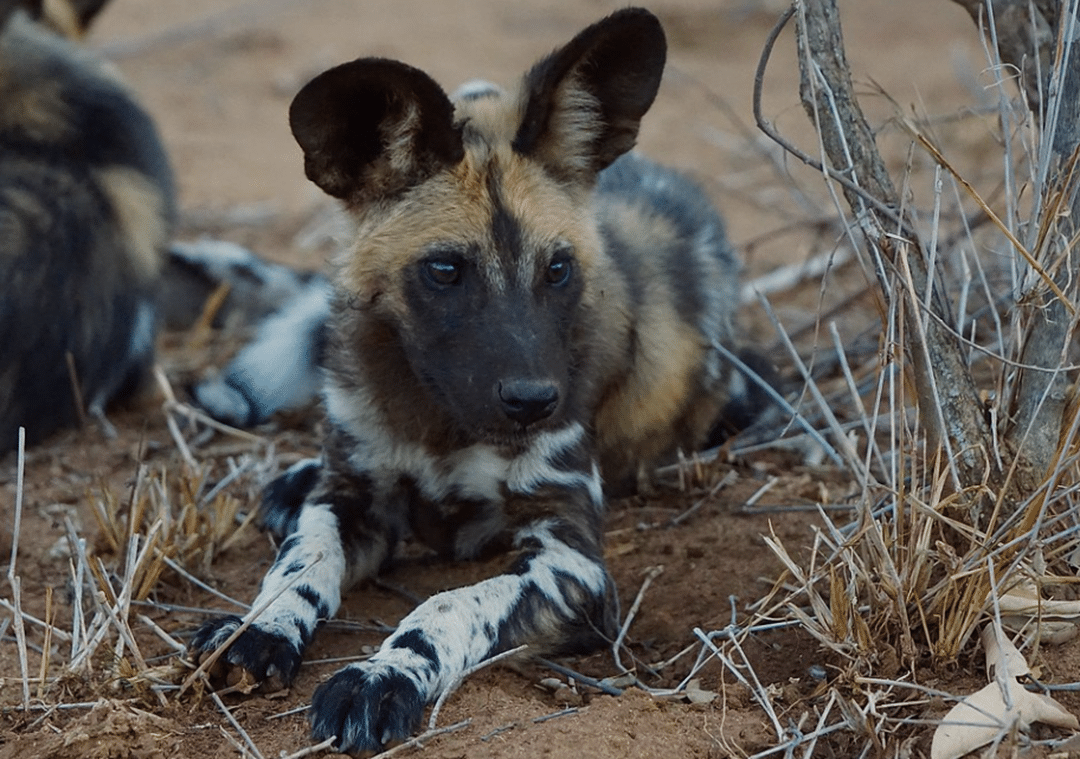
Hunting Techniques of Wild Dogs
Did you know that wild dogs are the most successful predator in Africa? These apex predators display hunting skills that allow them to pursue a range of prey, from small to medium antelopes to wildebeest calves. They can reach speeds up to 44 miles per hour often ensuring that targeted prey rarely escapes.
Throughout the chase, individuals take turns inflicting bites and tearing flesh until the prey succumbs to injury or exhaustion. Their hunting strategies are a marvel of coordination and stamina, with each member playing a role in the chase and eventual capture of their next meal.
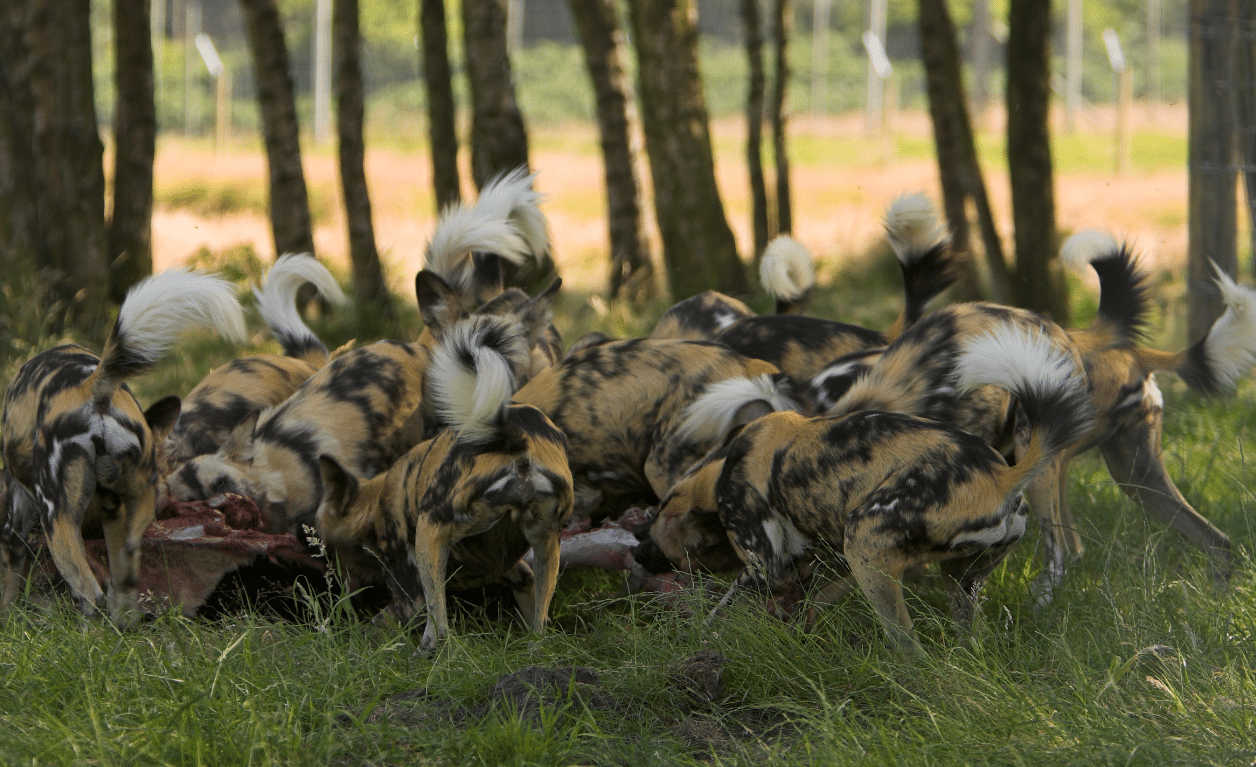
Decline of African Wild Dogs in Tanzania
Once spanning over 40 countries, they are now extinct in at least 26, with fewer than 10 supporting viable breeding populations. Even within these remaining countries, many parks and reserves where they once thrived now lack their presence. For example, in the Serengeti, once abundant with wild dogs, their numbers drastically dwindled within a few decades.
Despite their resilience, wild dogs face many threats to their existence. While habitat loss because of expansion and conflicts with local herders’ livestock and farms contribute to their decline, diseases transmitted by domestic dogs, such as rabies and distemper, also pose a significant threat.
Conservation Efforts
Despite these challenges, there are glimmers of hope. Increased awareness and concerted conservation efforts have stabilized or increased wild dog populations in several reserves and national parks.
Organizations like Painted Dog Conservation and the African Wildlife Foundation are working with local communities and organizations to protect the wild dogs in Tanzania and other places.
By understanding their behavior and habitats, visitors can contribute to the conservation of Tanzania’s wild dogs while enjoying unforgettable wildlife encounters. Plan your journey to witness these remarkable creatures in their natural element.
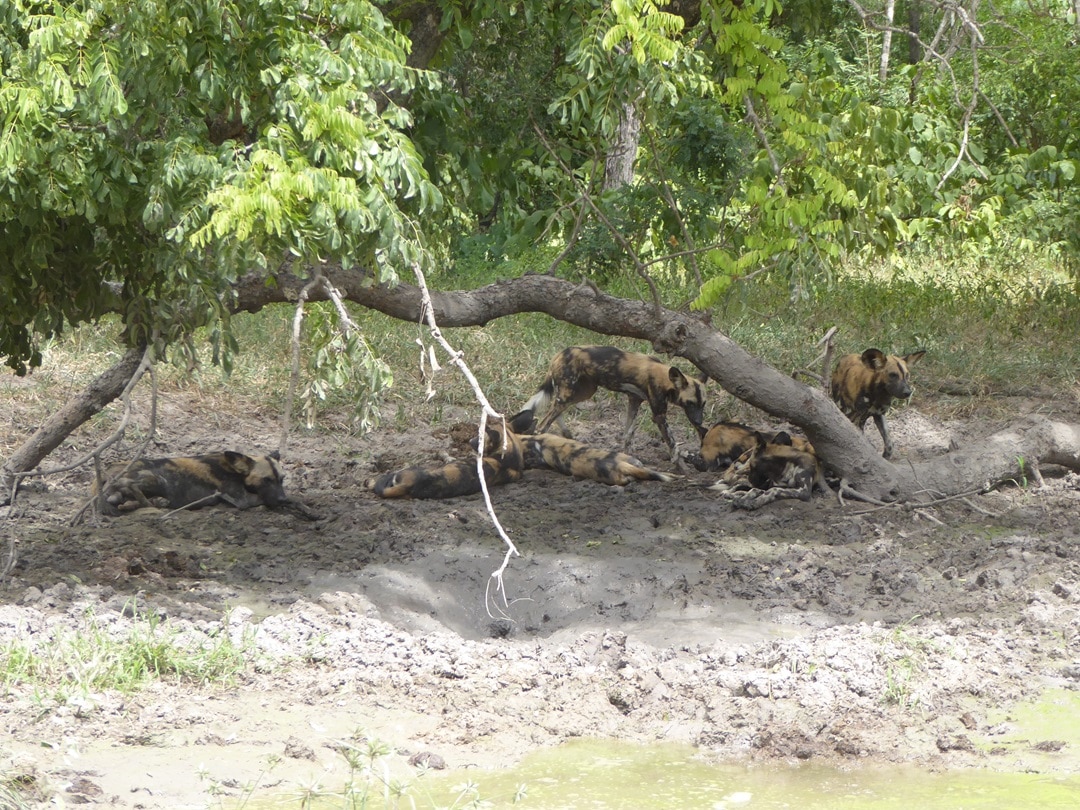
Where Else Can You See Wild Dogs?
Though sightings of African wild dogs are rare, there are still a few countries where encountering these captivating creatures is plausible including Zambia, Zimbabwe, Botswana and South Africa.
Kruger National Park, particularly its private reserves like MalaMala and Sabi Sands, host a significant breeding population. When I was on safari in South Africa, I just missed seeing wild dogs when exploring the Klaserie Private Nature Reserve.
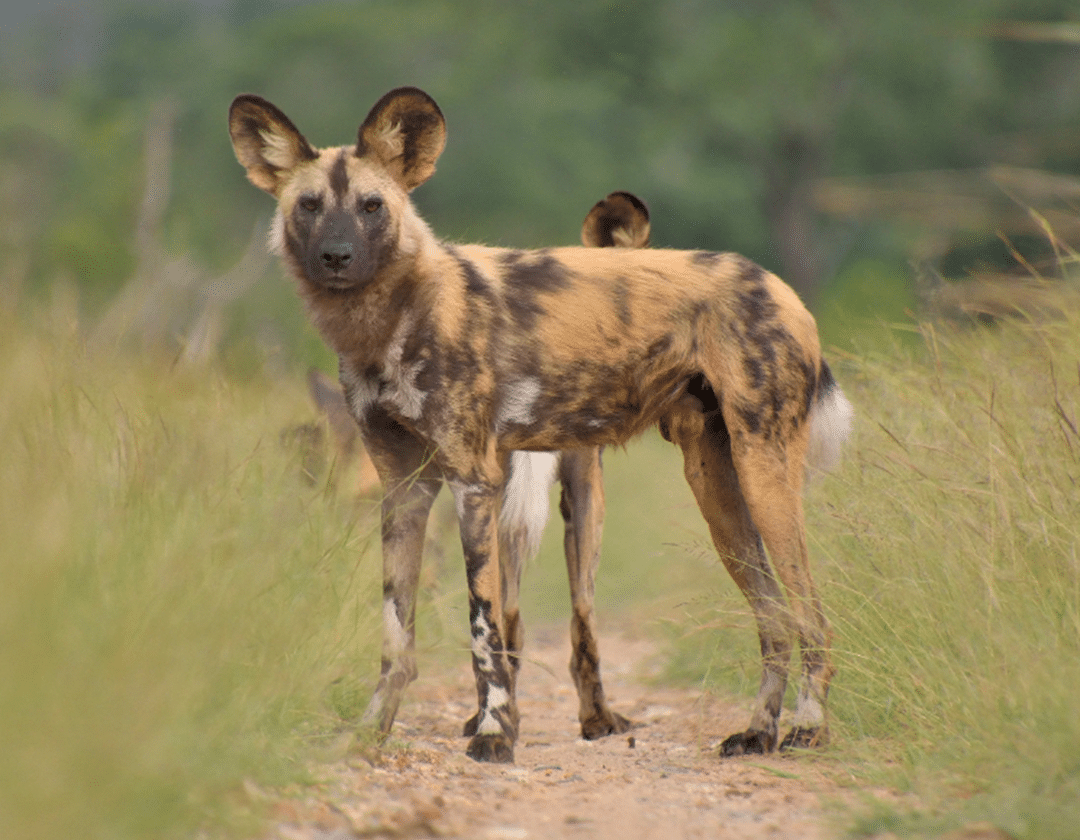
Final Thoughts
Wild dogs in Tanzania are a symbol of the wilderness that still thrives in parts of the world, despite the challenges of conservation and human encroachment. Their social structures, hunting prowess, and complex communication highlight the balance of nature and the importance of preserving such magnificent animals for future generations to marvel at and learn from. I hope that you have the opportunity, like I did, to see these creatures in the wild!
If you enjoyed my post, follow me on social media or subscribe to my newsletter below, so you can stay connected on future posts, trips, tips and more.


